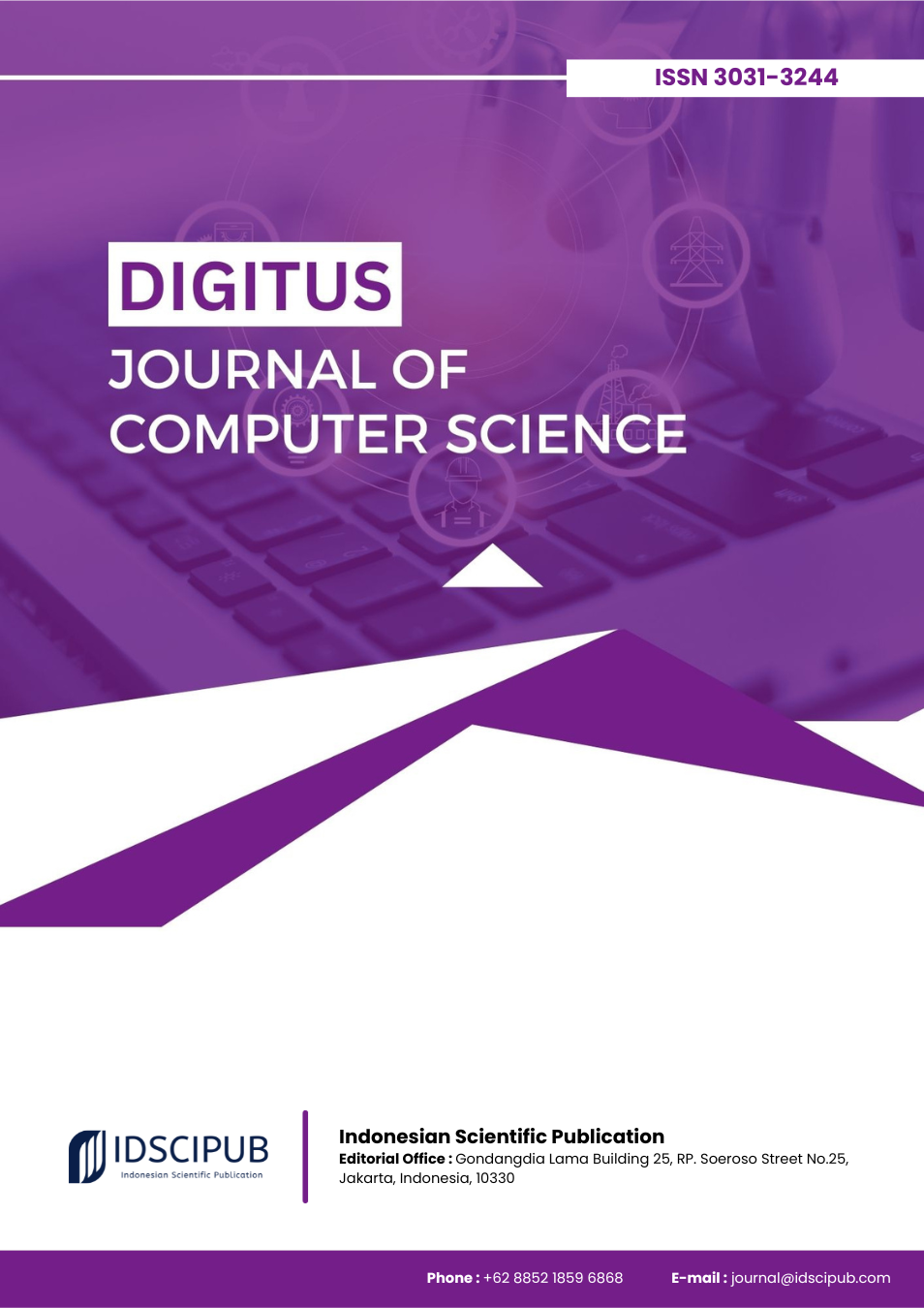Sentiment as Signal: Detecting Political Misinformation in Indonesia’s 2024 Election via Lexicon Based NLP
DOI:
https://doi.org/10.61978/digitus.v2i3.951Keywords:
Sentiment Analysis, Misinformation Detection, Indonesian Elections, Political Hoaxes, Lexicon Based NLP, Social Media, Low Resource LanguageAbstract
The 2024 Indonesian presidential election witnessed heightened political discourse on social media, accompanied by an alarming rise in misinformation. This study explores the use of lexicon augmented sentiment analysis as a method to detect hoax content in electoral conversations across Twitter, TikTok, and Meta platforms. By combining sentiment polarity analysis with weak supervision and partial manual validation, we developed a hybrid model tailored to Bahasa Indonesia. Using around 50,000 social media posts combined with a verified hoax index from MAFINDO, we examined how sentiment changed over time within political hashtags. We found that sentiment sharply declined after major events like debates and result announcements. Importantly, posts with very negative tone were 3–9 times more likely to contain misinformation, with 18% directly matching confirmed hoaxes. The hybrid model improved classification accuracy from 64% to 78%, showing its practical potential. The results confirm that sentiment polarity particularly extreme negativity can serve as a leading indicator for misinformation outbreaks. By aligning lexicon based sentiment scores with external verification sources, this framework enables scalable and semi automated detection of political hoaxes in low resource language settings. Ethical considerations in data handling, platform compliance, and demographic inclusivity are emphasized throughout the methodology. This research contributes to computational political analysis by validating a practical, replicable model for electoral misinformation detection. Future work should extend toward multimodal detection, real time dashboards, and participatory collaborations with fact checkers and regulatory bodies.
References
Adipradana, R., Nayoga, B. P., Suryadi, R., & Suhartono, D. (2021). Hoax Analyzer for Indonesian News Using RNNs With Fasttext and Glove Embeddings. Bulletin of Electrical Engineering and Informatics, 10(4), 2130–2136. https://doi.org/10.11591/eei.v10i4.2956 DOI: https://doi.org/10.11591/eei.v10i4.2956
Basavaraj, K. A. (2022). Misinformation in India’s 2019 National Election. Journal of Quantitative Description Digital Media, 2. https://doi.org/10.51685/jqd.2022.021 DOI: https://doi.org/10.51685/jqd.2022.021
Cahayani, I. (2024). Vaccine Diplomacy as New Soft Power Effort of US in Dealing With China in Southeast Asia. Jurnal Ilmiah Hubungan Internasional, 20(1), 14–36. https://doi.org/10.26593/jihi.v20i1.6109.14-36 DOI: https://doi.org/10.26593/jihi.v20i1.6109.14-36
Calefato, F., Lanubile, F., & Novielli, N. (2018). How to Ask for Technical Help? Evidence-Based Guidelines for Writing Questions on Stack Overflow. Information and Software Technology, 94, 186–207. https://doi.org/10.1016/j.infsof.2017.10.009 DOI: https://doi.org/10.1016/j.infsof.2017.10.009
Charquero‐Ballester, M., Walter, J. G., Nissen, I. A., & Bechmann, A. (2021). Different Types of COVID-19 Misinformation Have Different Emotional Valence on Twitter. Big Data & Society, 8(2). https://doi.org/10.1177/20539517211041279 DOI: https://doi.org/10.1177/20539517211041279
Corbu, N., Oprea, D.-A., Negrea-Busuioc, E., & Radu, L. (2020). ‘They Can’t Fool Me, but They Can Fool the Others!’ Third Person Effect and Fake News Detection. European Journal of Communication, 35(2), 165–180. https://doi.org/10.1177/0267323120903686 DOI: https://doi.org/10.1177/0267323120903686
Fathin, M., Sibaroni, Y., & Prasetyowati, S. S. (2024). Handling Imbalance Dataset on Hoax Indonesian Political News Classification Using IndoBERT and Random Sampling. Jurnal Media Informatika Budidarma, 8(1), 352. https://doi.org/10.30865/mib.v8i1.7099 DOI: https://doi.org/10.30865/mib.v8i1.7099
Haupt, M. R., Chiu, M., Chang, J., Li, Z., Cuomo, R. E., & Mackey, T. K. (2023). Detecting Nuance in Conspiracy Discourse: Advancing Methods in Infodemiology and Communication Science With Machine Learning and Qualitative Content Coding. Plos One, 18(12), e0295414. https://doi.org/10.1371/journal.pone.0295414 DOI: https://doi.org/10.1371/journal.pone.0295414
Hu, L., Han, G., Liu, S., Ren, Y., Wang, X., Yang, Z., & Jiang, F. (2025). Dual-Aspect Active Learning With Domain-Adversarial Training for Low-Resource Misinformation Detection. Mathematics, 13(11), 1752. https://doi.org/10.3390/math13111752 DOI: https://doi.org/10.3390/math13111752
Khan, A., Zhang, H., Boudjellal, N., Ahmad, A., & Khan, M. (2023). Improving Sentiment Analysis in Election-Based Conversations on Twitter With ElecBERT Language Model. Computers Materials & Continua, 76(3), 3345–3361. https://doi.org/10.32604/cmc.2023.041520 DOI: https://doi.org/10.32604/cmc.2023.041520
Lee, S., & Jang, S. M. (2022). Cynical Nonpartisans: The Role of Misinformation in Political Cynicism During the 2020 U.S. Presidential Election. New Media & Society, 26(7), 4255–4276. https://doi.org/10.1177/14614448221116036 DOI: https://doi.org/10.1177/14614448221116036
Malek, S., Griffin, C., Fraleigh, R., Lennon, R. P., Monga, V., & Shen, L. (2025). A Methodology Framework for Analyzing Health Misinformation to Develop Inoculation Intervention Using Large Language Models: A Case Study on Covid-19. https://doi.org/10.1101/2025.05.22.25327931 DOI: https://doi.org/10.1101/2025.05.22.25327931
McRae, D., Quiroga, M. d. M., Russo‐Batterham, D., & Kim, D. (2022). A Pro-Government Disinformation Campaign on Indonesian Papua. HKS Misinfo Review. https://doi.org/10.37016/mr-2020-108 DOI: https://doi.org/10.37016/mr-2020-108
Merayo, N., Vegas, J., Llamas, C., & Fernández, P. (2023). Social Network Sentiment Analysis Using Hybrid Deep Learning Models. Applied Sciences, 13(20), 11608. https://doi.org/10.3390/app132011608 DOI: https://doi.org/10.3390/app132011608
Morita, P. P., Hussain, I. Z., Kaur, J., Lotto, M., & Butt, Z. A. (2023). Tweeting for Health Using Real-Time Mining and Artificial Intelligence–Based Analytics: Design and Development of a Big Data Ecosystem for Detecting and Analyzing Misinformation on Twitter. Journal of Medical Internet Research, 25, e44356. https://doi.org/10.2196/44356 DOI: https://doi.org/10.2196/44356
Pennycook, G., Bear, A., Collins, E., & Rand, D. G. (2020). The Implied Truth Effect: Attaching Warnings to a Subset of Fake News Headlines Increases Perceived Accuracy of Headlines Without Warnings. Management Science, 66(11), 4944–4957. https://doi.org/10.1287/mnsc.2019.3478 DOI: https://doi.org/10.1287/mnsc.2019.3478
Pennycook, G., & Rand, D. G. (2021). Research Note: Examining False Beliefs About Voter Fraud in the Wake of the 2020 Presidential Election. HKS Misinfo Review. https://doi.org/10.37016/mr-2020-51 DOI: https://doi.org/10.37016/mr-2020-51
Quach, H., Thái, P. Q., Anh, H. T. N., Phung, D. C., Nguyen, V.-C., Le, S. T., Thanh, L. T., Le, D. H., Dang, A. D., Tran, D. N., Ngu, N. D., Vogt, F., & Khanh, N. C. (2022). Understanding the COVID-19 Infodemic: Analyzing User-Generated Online Information During a COVID-19 Outbreak in Vietnam. Healthcare Informatics Research, 28(4), 307–318. https://doi.org/10.4258/hir.2022.28.4.307 DOI: https://doi.org/10.4258/hir.2022.28.4.307
Rossini, P., Mont’Alverne, C., & Kalogeropoulos, A. (2023). Explaining Beliefs in Electoral Misinformation in the 2022 Brazilian Election: The Role of Ideology, Political Trust, Social Media, and Messaging Apps. HKS Misinfo Review. https://doi.org/10.37016/mr-2020-115 DOI: https://doi.org/10.37016/mr-2020-115
Sinpeng, A. (2019). Digital Media, Political Authoritarianism, and Internet Controls in Southeast Asia. Media Culture & Society, 42(1), 25–39. https://doi.org/10.1177/0163443719884052 DOI: https://doi.org/10.1177/0163443719884052
Teh, P. L., Ooi, P. B., Chan, N. N., & Chuah, Y. K. (2018). A Comparative Study of the Effectiveness of Sentiment Tools and Human Coding in Sarcasm Detection. Journal of Systems and Information Technology, 20(3), 358–374. https://doi.org/10.1108/jsit-12-2017-0120 DOI: https://doi.org/10.1108/JSIT-12-2017-0120
Tully, M., Bode, L., & Vraga, E. K. (2020). Mobilizing Users: Does Exposure to Misinformation and Its Correction Affect Users’ Responses to a Health Misinformation Post? Social Media + Society, 6(4). https://doi.org/10.1177/2056305120978377 DOI: https://doi.org/10.1177/2056305120978377
Walter, N., Brooks, J. J., Saucier, C. J., & Suresh, S. (2020). Evaluating the Impact of Attempts to Correct Health Misinformation on Social Media: A Meta-Analysis. Health Communication, 36(13), 1776–1784. https://doi.org/10.1080/10410236.2020.1794553 DOI: https://doi.org/10.1080/10410236.2020.1794553
Wang, W., & Jacobson, S. K. (2022). Effects of Health Misinformation on Misbeliefs: Understanding the Moderating Roles of Different Types of Knowledge. Journal of Information Communication and Ethics in Society, 21(1), 76–93. https://doi.org/10.1108/jices-02-2022-0015 DOI: https://doi.org/10.1108/JICES-02-2022-0015
Wilczek, B. (2020). Misinformation and Herd Behavior in Media Markets: A Cross-National Investigation of How Tabloids’ Attention to Misinformation Drives Broadsheets’ Attention to Misinformation in Political and Business Journalism. Plos One, 15(11), e0241389. https://doi.org/10.1371/journal.pone.0241389 DOI: https://doi.org/10.1371/journal.pone.0241389
Wojtczak, D. N., Peersman, C., Zuccolo, L., & McConville, R. (2023). Characterizing Discourse and Engagement Across Topics of Misinformation on Twitter. Ieee Access, 11, 115002–115010. https://doi.org/10.1109/access.2023.3324555 DOI: https://doi.org/10.1109/ACCESS.2023.3324555
Yamaguchi, S., Oshima, H., Watanabe, T., Osaka, Y., Tanihara, T., Inoue, E., & Tanabe, S. (2025). An Analysis of Literacy Differences Related to the Identification and Dissemination of Misinformation in Japan. Global Knowledge Memory and Communication, 74(11), 121–139. https://doi.org/10.1108/gkmc-07-2024-0419 DOI: https://doi.org/10.1108/GKMC-07-2024-0419





